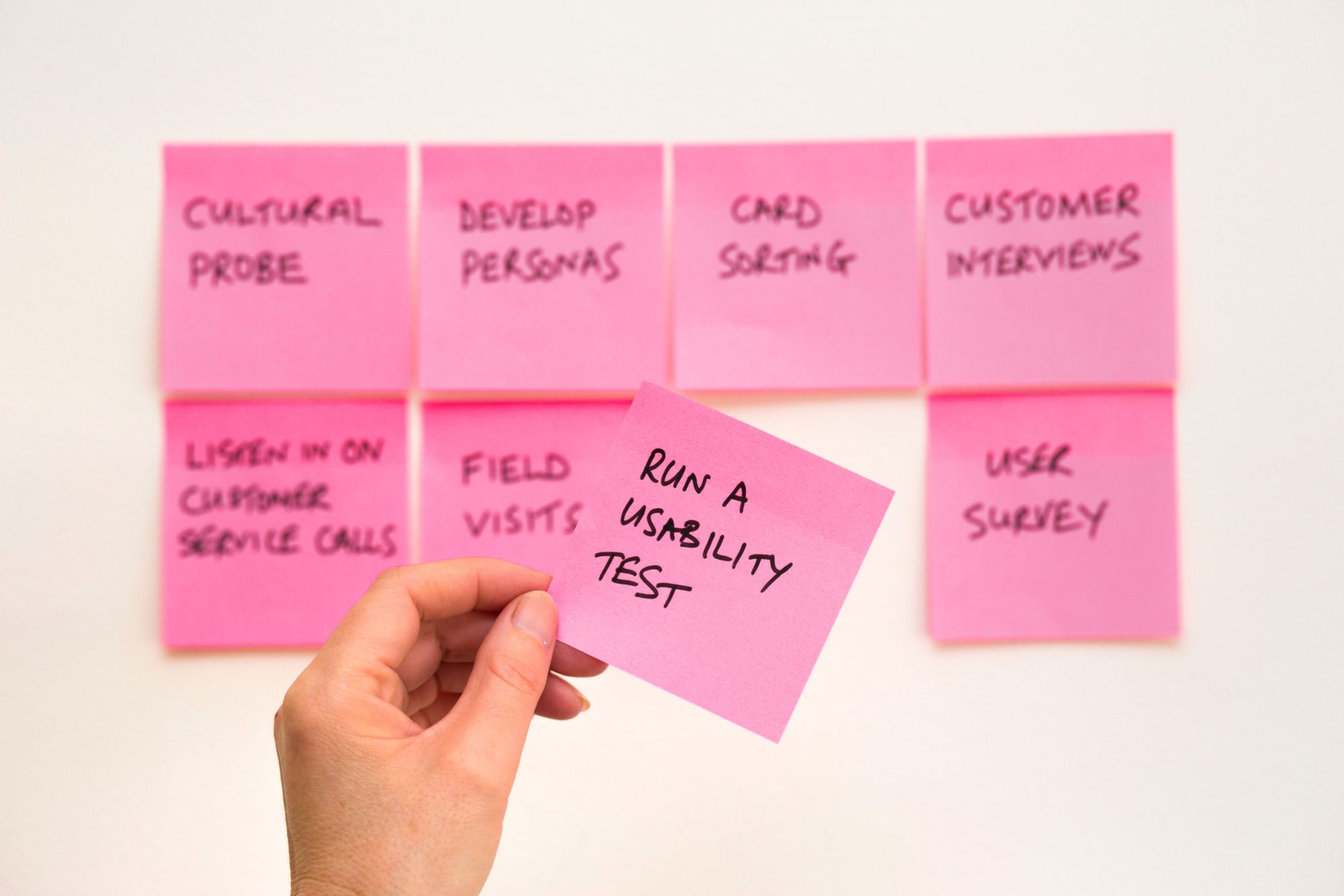In the United States, product development is a critical aspect of the economy, with companies investing millions of dollars and countless hours in bringing new products to market. The average budget for new product development in the United States is $5 million, according to a survey by the Project Management Institute (PMI).
These statistics highlight the significant investment and commitment that goes into product development. It takes a dedicated and talented team to bring a new product to market, and these statistics emphasize the importance of putting together the right team for the job.
The process can be fun and rewarding if you follow some tried and tested best practices. So, if you're ready to turn your product development dream into a reality, buckle up and get ready to learn the secrets of success.

From conducting thorough market research to embracing a continuous improvement mindset, we'll cover everything you need to know to bring your product ideas to life. With these best practices in your back pocket, you'll be able to build products that people will love and drive your business forward. So let's get started!
Here's what we shall cover in this post:
- What Is Product Development Strategy?
- Types of Product Development Growth Strategy
- Benefits of Product Development
- 5 Best Practices for Product Development
- How Deskera Can Assist You?
- Conclusion
- Key Takeaways
What Is Product Development Strategy?
Product development strategy refers to a company's plan to create, distribute, and promote a product. It is a crucial aspect of a business's success as it helps companies determine their product's viability and potential and understand their target market.
The following are some of the critical components of a product development strategy:
- Ideation: The first step in product development is coming up with an idea. It can come from internal brainstorming sessions, customer feedback, market research, or various other sources.
- Market Research: Before any development can occur, it is essential to conduct market research to understand the demand for the product, the target audience, and the competition.
- Define Goals and Objectives: Once the idea has been formed and market research has been conducted, it is crucial to define clear goals and objectives for the development process.
- Design and Development: The design and development stage involves creating prototypes, testing and refining the product, and preparing for mass production.
- Testing and Validation: Before the product can be launched, it must undergo rigorous testing and validation to ensure it meets all necessary standards and requirements.
- Launch and Marketing: Once the product has been developed and tested, it is time to launch and market it to the target audience. This stage involves creating a marketing plan, setting a budget, and getting the product in front of potential customers.
- Continuous Improvement: Product development is not a one-time event. It requires a continuous improvement mindset to ensure the product remains relevant and competitive.
Understanding that a product development strategy is a continuous process is essential. Companies must continuously monitor the market and change their product and marketing strategies.
Types of Product Development Growth Strategy
Product development is a critical aspect of any business that seeks to bring new and innovative products to market. A growth strategy for product development involves the steps a company takes to get a product from concept to launch and then to ongoing success in the market.
There are three main types of product development growth strategies:
Ideation Process Approach
The ideation process approach focuses on generating and evaluating ideas for new products. A series of evaluations and refinements follow this process to create a product that meets the target market's needs.
Time-Based Approach
The time-based approach is focused on speed-to-market, aiming to get a product to market as quickly as possible. This approach is often used when a company needs to respond to a rapidly changing market promptly or to take advantage of a limited window of opportunity.
To achieve this, companies often use agile development methodologies and cross-functional teams that work together to reduce development time.
Market Oriented Approach
The market-oriented approach focuses on understanding the target market's needs and wants and developing products that meet those needs. This approach often involves conducting market research and customer surveys to gain insights into the target market.
Based on this information, companies can then design and develop products specifically tailored to meet the target market's needs.
All three of these product development growth strategies have their strengths and weaknesses.
- The time-based approach is ideal for quickly responding to market changes, but it can lead to a product that is not fully developed or is not well suited to the target market.
- The ideation process approach is ideal for generating a wide range of ideas, but it can be time-consuming and may not result in developing a product that meets the target market's needs.
- The market-oriented approach is ideal for creating products that meet the target market's needs, but it can be more expensive and time-consuming compared to the other two approaches.
Benefits of Product Development
Product development is the process of creating new products or improving existing ones. Here are five benefits of product development:
- Increased competitiveness: Product development can help companies stay ahead of the competition by introducing new and improved products. It can help companies maintain their market position and increase their competitiveness.
- Customer satisfaction: By regularly introducing new products, companies can meet the changing needs of their customers. This can help increase customer satisfaction and loyalty.
- Increased revenue: New and improved products can lead to increased sales, resulting in increased revenue for companies.
- Cost savings: Product development can also result in cost savings for companies. For example, companies can reduce production costs by streamlining production processes or using more cost-effective materials.
- Improved brand image: Introducing new and innovative products can help improve a company's brand image. It can attract new customers and increase brand recognition.
5 Best Practices for Product Development
To ensure the success of product development, companies should adopt best practices that can guide their efforts. Here are five of the essential product development best practices that companies should follow:
Conduct Market Research and Customer Analysis
Conducting market research and customer analysis are critical components of effective product development. This information helps companies understand the needs and wants of their target customers, allowing them to design products tailored to those needs.
Here are some key points to consider when conducting market research and customer analysis for product development:
- Define the target market: Companies should clearly define their target market, including information about their age, income, location, and purchasing habits. This information will help inform the product development process and ensure that the product meets the target market's needs.
- Conduct surveys and focus groups: Companies should conduct surveys and focus groups to gather information about their target market. It can include online surveys, phone surveys, or in-person focus groups. The information collected from these research methods can provide valuable insights into customer needs and preferences.
- Analyze competitors: Companies should analyze their competitors to understand their strengths and weaknesses and identify opportunities in the market. This information can be used to inform the product development process and ensure that the product is differentiated from competitors.
- Review sales data: Companies should review their sales data to understand which products sell well and why. This information can help inform the product development process and ensure that the company makes informed decisions about which products to develop.
- Stay up-to-date on industry trends: Companies should stay up-to-date on industry trends and market conditions. This information can be used to inform the product development process and ensure that the company is making decisions that are in line with the current market conditions.
Define Clear Goals and Objectives
Defining clear goals and objectives is an essential component of effective product development. Companies with well-defined goals and objectives can better prioritize their efforts and allocate resources to achieve their desired outcomes.
Here are some key points to consider when defining clear goals and objectives for product development:
- Set specific, measurable goals: Companies should set clear goals for their product development process. It includes defining what the product will do, how it will benefit the customer, and what the company hopes to achieve by launching the product.
- Determine the target market: Companies should determine the target market for their product. This information will help inform the product development process and ensure that the product meets the target market's needs.
- Establish a timeline: Companies should establish a timeline for the product development process. It includes setting deadlines for key milestones and determining how much time will be needed to complete each stage of the process.
- Identify resources: Companies should identify the resources they will need to develop the product, including funding, personnel, and equipment. This information will help to inform the product development process and ensure that the company has the resources it needs to achieve its goals.
- Monitor progress: Companies should monitor their progress against the goals and objectives they have set. It includes tracking key metrics, such as product sales and customer feedback, and making necessary changes to ensure that the product meets the target market's needs.
Embrace a Continuous Improvement Mindset
Product development is not a one-time process but rather an ongoing effort to continuously improve the product and make it the best it can be. Companies must embrace a continuous improvement mindset, which means being open to feedback, making changes based on customer feedback and market data, and refining the product.
Here are some key points to embrace a continuous improvement mindset in product development:
- Focus on the customer: Companies that embrace a continuous improvement mindset focus on the needs and wants of their target customers. They understand that customer needs are constantly changing and that their products must evolve to meet those needs.
- Encourage feedback: Companies that embrace a continuous improvement mindset encourage feedback from their target customers. This feedback is used to inform the development process and to refine the product over time.
- Continuously evaluate the product: Companies that embrace a continuous improvement mindset continuously evaluate their product to identify areas for improvement. This allows them to make changes that align with their target customers' needs.
- Be open to change: Companies that embrace a continuous improvement mindset are open to change and are not afraid to try new approaches. This mindset helps them to be more flexible and adaptable in the face of change.
- Empower teams: Companies embracing a continuous improvement mindset empower their teams to drive change and improve. They provide their teams with the resources and support they need to be successful and encourage them to take ownership of the product development process.
Foster a Culture of Collaboration and Communication
Collaboration and communication are key components of effective product development. Teams must work together and communicate effectively to ensure everyone is aligned and working towards a common goal. This includes cross-functional teams, such as engineering, design, and marketing, who need to work together to bring the product to market.
Here are some key points to foster a culture of collaboration and communication in product development:
- Encourage open communication: Companies should encourage open communication between different teams and individuals involved in the product development process. This includes regular meetings, updates, and opportunities for team members to share their ideas and feedback.
- Foster teamwork: Companies should foster teamwork and collaboration among different teams and individuals involved in the product development process. This includes creating opportunities for team members to work together and encouraging them to share their skills and expertise.
- Promote cross-functional collaboration: Companies should promote cross-functional collaboration between different departments and teams involved in the product development process. This helps to ensure that diverse perspectives and expertise are considered and that everyone is working towards the same goals.
- Celebrate successes: Companies should celebrate successes and encourage team members to share their accomplishments. This helps to build a positive and collaborative culture and creates a sense of pride and ownership among team members.
- Create an inclusive culture: Companies should create an inclusive culture that values diversity and encourages team members to bring their unique skills, expertise, and perspectives to the table. This helps to ensure that different perspectives are considered and that the best ideas are brought to the forefront.
Use Agile Methodologies
Agile methodologies are a set of processes and practices that promote rapid and flexible product development. They are designed to allow teams to respond quickly to change and iterate rapidly based on feedback from the target market.
Companies should use agile methodologies to allow for rapid prototyping, testing, and iteration, which helps ensure that the product is always evolving and meeting the target market's needs.
Here are some key points to consider when using agile methodologies for product development:
- Emphasize collaboration: Agile methodologies emphasize collaboration between team members, stakeholders, and customers. This helps to ensure that everyone is working towards the same goals and that everyone clearly understands the product development process.
- Focus on delivering value: Agile methodologies focus on delivering value to customers as quickly as possible. This helps to ensure that the product meets the target market's needs and that the company is progressing toward its goals.
- Adapt to change: Agile methodologies are designed to be flexible and adaptable to change. It allows teams to quickly respond to evolving requirements or market conditions and make changes to the product as needed to meet customer needs.
- Embrace failure: Agile methodologies embrace failure as an opportunity to learn and improve. This helps to create a culture of continuous improvement, where teams are encouraged to experiment and iterate on their ideas in order to deliver the best possible product.
How Deskera Can Assist You?
Deskera ERP is a comprehensive system that allows you to maintain inventory, manage suppliers, and track supply chain activity in real-time, as well as streamline a variety of other corporate operations.

Deskera ERP and MRP system can help you:
- Manage production plans
- Maintain Bill of Materials
- Generate detailed reports
- Create a custom dashboard
Deskera Books enables you to manage your accounts and finances more effectively. Maintain sound accounting practices by automating accounting operations such as billing, invoicing, and payment processing.
Deskera CRM is a strong solution that manages your sales and assists you in closing agreements quickly. It not only allows you to do critical duties such as lead generation via email, but it also provides you with a comprehensive view of your sales funnel.
Deskera People is a simple tool for taking control of your human resource management functions. The technology not only speeds up payroll processing but also allows you to manage all other activities such as overtime, benefits, bonuses, training programs, and much more. This is your chance to grow your business, increase earnings, and improve the efficiency of the entire production process.
Conclusion
Implementing best practices in product development is crucial for companies looking to create successful and innovative products. The development process is a complex and challenging task that requires careful planning, effective execution, and continuous improvement.
Fostering a culture of collaboration and communication is key to creating a strong and effective product development team. Teams that work together and communicate effectively are better equipped to address challenges and overcome obstacles and are more likely to create successful products.
Finally, agile methodologies can help companies be more flexible, responsive, and effective in their development process, enabling them to respond to changing requirements and market conditions quickly.
By adopting a strategic and systematic approach, companies can ensure that their products are well-designed, meet customer needs, and achieve commercial success. By following best practices, companies can stay ahead of the curve, remain competitive in a constantly evolving market, and achieve their product development goals.
Key Takeaways
- Achieving product development goals requires a strategic and systematic approach.
- Define clear goals and objectives to stay focused and measure the success of product development efforts.
- Embrace a continuous improvement mindset to stay ahead of the curve and remain competitive in a constantly evolving market.
- Foster a culture of collaboration and communication to create a strong and effective product development team.
- Use agile methodologies to be more flexible, responsive, and effective in the development process.
- Adopt a holistic and strategic approach to product development.
- Ensure that products are well-designed, meet customer needs, and achieve commercial success.
- Stay ahead of the curve and remain competitive in a constantly evolving market.
Related Articles












